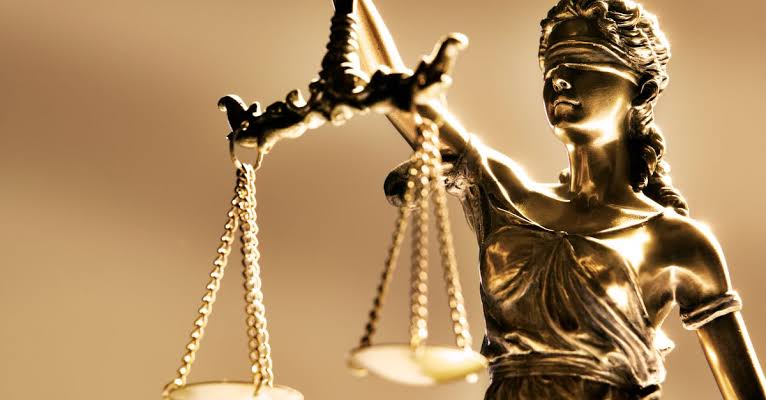THE CATEGORIES OF JUDICIAL REVIEW INTEGRATED IN INDIAN JUDICIAL SYSTEM

Author: Harshika Bhutda, a student at Symbiosis Law School, Hyderabad.
Judicial review refers to the Supreme Court’s (or High Courts’) authority to consider whether a statute is constitutional or not. Whenever the Court determines that a law conflicts with the Constitution, it would be deemed unconstitutional and rendered inapplicable.
Stated differently, judicial review refers to the judiciary’s authority to assess the legality of state and federal legislative acts as well as executive directives. The ability of the Judiciary to examine and assess the legality of a law or an order is known as judicial review. Judicial review is important as it prevents the tyranny of the executive branch, it protects citizens’ fundamental rights, it is essential for preserving the independence of the judiciary, it is a must for upholding the supremacy of the Constitution, and assists in stopping the abuse of power by the legislative and executive branches, and it helps to maintain the balance between the federal government and the states.
Article 13(2) states that neither the Union nor the States may pass legislation that restricts or eliminates any of the fundamental rights, and that any legislation that does so would be invalid to the degree that it violates this obligation. Part III of the Constitution guarantees Fundamental Rights, which must be upheld and safeguarded by judicial review. Article 32 of the Constitution gives the Supreme Court of India the authority to uphold these rights. This gives people the ability to file a direct complaint with the SC in order to seek redress for violations of their fundamental rights. There are different types of judicial review.
- Reviews of legislative actions
The ability of the court to judge whether legislative acts are constitutional is known as judicial review of legislative acts. This kind of judicial examination implies that the legislation passed by the legislature are compliant with the Constitution’s legal provisions. The primary purpose of the writ of habeas corpus is to enable judicial investigation of State actions that result in an illegal loss of an individual’s liberty. In India, the judiciary has the authority to investigate whether legislation or rulings made by the legislature adhere to the constitution.
The type of review is discussed in:
Shankari Prasad v Union of India(1951); The First Amendment Act of 1951 was challenged on the grounds that it curtailed people’s “right to property.” The argument was rejected by the Supreme Court, which ruled that the basic rights guaranteed by Article 13 could not be restricted.
The subject of the Constitution’s existence under the 17th Amendment Act of 1964 was raised in Sajjan Singh v. State of Rajasthan (1965). The Court ruled that the constitutional modifications enacted under Article 368 are outside the purview of judicial review by the courts, eliminating the position in the Shankar Prasad case.
There was a challenge to the 24th and 25th Constitutional Amendments in Keshavananda Bharti v. State of Kerala (1973). A 13-judge panel was assigned to the case, and based on a 7:6 ratio, the Court concluded that:
- The President may amend the Constitution by using the authority granted to him by Article 368.
- Amendments to the Constitution are not the same as regular statutes.
- The Parliament cannot alter or overthrow the Constitution’s fundamental principles.
- Reviews of Administrative actions
Under the doctrine of judicial review, the courts have the ability to ensure the validity of any administrative decisions taken by the authorities. It looks at the administrative activities’ validity and reason.
Through the process of judicial review of administrative action, administrative authorities can make sure that their actions are transparent, reasonable, and fair when exercising their authority. Article 226 of the Constitution gives judges the authority to examine administrative decisions in India. It gives the High Courts the authority to grant writs to uphold legal rights and enforce basic rights. Article 32 also gives the Supreme Court equivalent authority. The grounds for Judicial Review of Administrative actions are illegality, irrationality, procedural impropriety, and proportionality.
A method to identify irrationality was created in the 1947 case of Associated Provincial Picture House v. Wednesbury. The exam is currently referred to as the “Wednesbury test.” The court acknowledged irrationality as a basis for judicial review in the case and enumerated three requirements to demonstrate irrationality.
- If no one operating reasonably would have chosen the same course of action.
- If the authority did not consider important elements when choosing.
- If those in positions of control considered unimportant details.
The Supreme Court held in the State of U.P. v. Johri Mal case that, while using its judicial review authority, the court is more interested in the decision-making process than the actual decision’s merits. In Delhi Development Authority v. UEE Electricals Engg. (P). Ltd., the Supreme Court made the argument that there are restrictions on the use of judicial review authority over administrative actions and that it should not be used in the absence of any irrationality or malice.
- Reviews of Judicial actions
Any discrepancies or inadequacies in earlier court rulings may be corrected by the judicial review. This guarantees that there are as few opportunities for future conflicts of this kind. This kind of review is carried out by the judiciary itself to update or correct earlier decisions or declarations. Judicial review of judicial decisions is the process by which higher courts examine decisions made by subordinate courts without interfering with their operations. The Indian judiciary cannot operate efficiently without the same. The concept that governs the judiciary’s evaluation of legislative and executive activities is known as judicial review.
Three constitutional amendments—the first (1951), the fourth (1955), and the seventeenth (1964)—were challenged in the 1967 case of I. C. Golaknath & Ors vs. State Of Punjab & Anrs. The Honourable Supreme Court argued that Article 368 does not grant Parliament the power to amend the Constitution or to restrict or eliminate basic rights.
In Minerva Mills Ltd. vs. Union of India (1980), the Supreme Court overturned provisions (4) and (5) of Article 368, which were added by the 42nd Amendment (1976), on the grounds that they damaged the Constitution’s core framework. The Supreme Court held in Rustom Cavasjee Cooper vs. Union of India (1970), sometimes referred to as the Bank Nationalisation Case, that the Constitution guarantees the right to compensation—that is, the right to receive an equivalent amount of money for property obtained via coercion. The main accomplishment of this case was the rejection of the “Mutual Exclusivity Theory,” which had been in use for twenty years before to the decision of A. K. Gopalan v. State of Madras. The Court ruled that it cannot deny a petition that unequivocally demonstrates that people’ fundamental rights are being violated on the grounds of formalities alone. The mere fact that a legislative measure infringed upon the company’s rights did not absolve the court of its authority to defend the rights of the company’s shareholders. Additionally, the Court established the “Effect” test and invalidated the “Object” test. Now, the Effect test would examine the impact of any specific legislative act.
One of the most potent mechanisms in the Indian Constitution is the judicial review function. The Indian Constitution expressly supports this idea, which unquestionably has its origins in India.
Judicial review serves as both a protector of the Constitution and a means of preserving the basic rights guaranteed by it. The Central Vista project was rejected by the Indian Supreme Court, which stated that it was an exceptional instance requiring “heightened” judicial examination. The Court ruled that as long as the Constitutional requirements are followed, the government is free to create policies and make mistakes in them.
Since the locus standi concept was abandoned, the judiciary has been able to intervene in matters pertaining to the public interest through suo moto cases and Public Interest Litigations (PILs), even in situations where the party that was harmed did not complain.




